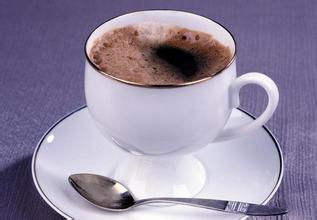Taste smooth Peruvian Coffee Flavor Manor characteristics of Organic Coffee Fine Coffee
The country is divided into 24 provinces and one directly affiliated region (Kaya). The names of the provinces are as follows: Amazon, Ankash, Aprimac, Arekupa, Ayakucho, Cajamaka, Cusco, Vanuca, Ika, Hunin, Lalibertad, Lambayek, Lima, Loreto, Madre de Dios, Mokegua, Pasco, Piura, Puno, San Maarten, Takna, Puno Tombes province, Ukayali province. [4]
The capital, Lima (lima), has a population of 7.8167 million (2005). With an annual average temperature of 18.7 ℃, it is known as "the city without rain in the world". [5]
Geographic environment editing
Location domain
Topographic map of Peru
Topographic map of Peru
Peru is located in western South America with an area of 1285216 square meters. It is bordered by Ecuador and Colombia to the north, Brazil to the east, Chile to the south, Bolivia to the southeast and the Pacific Ocean to the west. The coastline is 2254 kilometers long. [2]
Topography
The capital Lima
The capital Lima
The Andes runs from north to south, and the mountains account for 1% of the total area of the country. The whole territory is divided into three regions from west to east: the western coastal area is a long and narrow arid zone, a tropical desert region, with a dry and mild climate, a plain with intermittent distribution, developed irrigated agriculture and a concentrated urban population; the central mountain plateau is mainly the middle part of the Andes, with an average elevation of about 4300 meters, the birthplace of the Amazon River. The east is the Amazon tropical rain forest region, which belongs to the upper reaches of the Amazon River, foothills and alluvial plains, with high temperature and rain all the year round, forests and sparsely populated areas. it is a newly developed oil production area in Peru.
Mount Coropuna and Mount Salcan are both more than 6000 meters above sea level, while Mount Vascalan is 6768 meters above sea level, the highest point in Peru. The main rivers are the Ukayari River and the Putumayo River. The southern part of the central part is volcanic with frequent earthquakes, and Lake Titicaca, which is the second largest lake in South America, lies on the southeast border with Bolivia. The northern part of the center contains oil along the coast and offshore. Offshore waters are rich in fishery resources such as anchovy (Peruvian sardines), and there are a large number of guano layers in the coastal islands. The forest area accounts for 51% of the territorial area. [6]
Climate
The whole territory is divided into tropical desert, plateau and tropical rain forest climate from west to east. The western part of Peru has a tropical desert and grassland climate, dry and mild, with an annual average temperature of 12-32 ℃; the central part of Peru has a large temperature change, with an annual average temperature of 1-14 ℃; and the eastern part belongs to a tropical rain forest climate, with an annual average temperature of 24-35 ℃. The average temperature in the capital is 15: 25 ℃. The annual precipitation is less than 50 mm in the west, 200mm in the middle and more than 2000 mm in the east. [7]
Time zone
West Fifth District (UTC-5) is 5 hours later than GMT and 13 hours later than Beijing time.
Natural resources editor
It is rich in mining resources and is one of the top 12 mining countries in the world. There are mainly copper, lead, zinc, silver, iron and oil. The reserves of bismuth and vanadium rank first in the world, copper ranks third, silver and zinc fourth. The proved reserves are 400 million barrels of oil and 7.1 trillion cubic feet of natural gas. Forest coverage is 58%, with an area of 77.1 million hectares, second only to Brazil in South America. It is extremely rich in hydraulic and marine resources, rich in fishery resources, and the output of fishmeal is among the highest in the world. [8]
In 2009, Peru ranks first in silver production in the world, second in copper, second in zinc, third in tin, and sixth in gold. Peru's history of growing coffee is not long, but as a rising star, Peruvian coffee is gradually opening up its popularity and entering the world.
Peru is located in western South America, with a coastline of 2254 kilometers. The Andes runs from north to south, and the mountains account for 1% of the country's area. it belongs to the tropical desert region with a dry and mild climate. Peruvian coffee is mostly grown at the foot of the Andes, where it is rich in traditional Central American top coffee beans.
"how about Peruvian coffee beans and Peruvian organic coffee? Introduction to Peruvian Coffee w.kaf.name
Peruvian coffee beans are best known for their coffee beans from Chimacha Mayou in the middle and Cusco in the south. In addition, some areas in northern Peru also produce characteristic organic coffee. Organic coffee is made of beans grown in the shade of trees. Although the yield of coffee beans is not high because of the method of planting in the shade, its quality can reach the level of gourmet coffee. This is because shading trees can slow down the ripening of coffee trees, help coffee grow fully, make it contain more natural ingredients, breed better flavors, and reduce caffeine content.
Peruvian coffee is grown in a planned way, which has greatly increased coffee production. Peruvian coffee has a mellow taste and proper acidity, and this lukewarm coffee attitude has made more and more people like it. Peruvian coffee has always been used as one of the stable mellow mixed beans of comprehensive coffee, and its rich acidity and mellow smoothness are its most prominent features. Peruvian coffee has a soft sour taste, medium texture, good taste and aroma, and is an indispensable ingredient in the production of comprehensive coffee. High-quality Peruvian coffee, with a strong aroma, smooth, layered, full-bodied and sweet, with elegant and mild sour taste, will quietly awaken your taste buds. Peru's best coffee is produced in Chaximayo, Cusco, Nott and Puno. Most Peruvian coffee is grown under natural conditions, but it is also difficult to confirm the cultivation of all coffee trees. Coffee grown under natural conditions costs 10% more than others and is exported to the United States and Japan.
The quality of Peruvian coffee is comparable to that of any kind of coffee in Central or South America. Apart from some of the high-quality coffee produced in Peru, in addition to producing instant coffee, most of the high-quality coffee produced in Peru is shipped to Germany to process mixed coffee and then to Japan and the United States, which also illustrates its high standard of quality.

Important Notice :
前街咖啡 FrontStreet Coffee has moved to new addredd:
FrontStreet Coffee Address: 315,Donghua East Road,GuangZhou
Tel:020 38364473
- Prev

Introduction of Coffee Coffee with a Special Flavor in Coffee Manor
In general, coffee is made by washing or insolating, removing the peel, pulp and sheepskin of coffee, and finally taking out coffee beans. But civet coffee uses the process of natural fermentation in animals to obtain coffee beans. Coupled with the fact that civets only exist in islands such as Indonesian islands, the time and place of infestation is mysterious, and the number is decreasing, which will lead to the price of civets coffee.
- Next

Coarse and fruity flavor of Cuba's Crystal Mountain Coffee Manor flavor and taste characteristics of fine coffee beans
Cuba's coastline is about 6000 kilometers long, most of which are flat, with mountains in the east and middle and hills in the west, and most of the territory has a savanna climate. [6] in addition to Cuba, it also includes more than 1600 surrounding islands of different sizes. The islands consist of five islands: Savannah, Camag ü ey, Colorados, Queen's Garden and Canare.
Related
- Detailed explanation of Jadeite planting Land in Panamanian Jadeite Manor introduction to the grading system of Jadeite competitive bidding, Red bid, Green bid and Rose Summer
- Story of Coffee planting in Brenka region of Costa Rica Stonehenge Manor anaerobic heavy honey treatment of flavor mouth
- What's on the barrel of Blue Mountain Coffee beans?
- Can American coffee also pull flowers? How to use hot American style to pull out a good-looking pattern?
- Can you make a cold extract with coffee beans? What is the right proportion for cold-extracted coffee formula?
- Indonesian PWN Gold Mandrine Coffee Origin Features Flavor How to Chong? Mandolin coffee is American.
- A brief introduction to the flavor characteristics of Brazilian yellow bourbon coffee beans
- What is the effect of different water quality on the flavor of cold-extracted coffee? What kind of water is best for brewing coffee?
- Why do you think of Rose Summer whenever you mention Panamanian coffee?
- Introduction to the characteristics of authentic blue mountain coffee bean producing areas? What is the CIB Coffee Authority in Jamaica?

